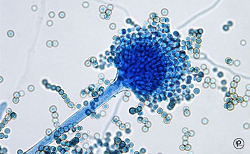Group: Patients and general interest
Description:
A patient interview. This patient RW- with long term chronic pulmonary aspergillosis describes his experiences over 18 years during which he has taken various antifungal treatments. He remains well and currently takes itraconazole. A synopsis is shown below. This patient underwent a lung resection in 1991 for a suspect lesion in his lung, histology revealed inflammation and an area containing fungal hyphae consistent with a fungal ball. Resection appeared to cure the problem. However in 1992 he re-presented with a large new cavity near the site of the surgery and a probable fungal ball seen on X ray. A bronchoscopy sample grew aspergillus and his blood tests were positive for aspergillus precipitins. Chronic pulmonary aspergillosis was diagnosed. Antifungal treatment on itraconazole was started and much improvement was seen. During the next few years the patient tried voriconazole (as a trial drug) – on which he experienced a red facial rash; IV amphotericin – which improved his condition markedly. Itraconazole treatment was then restarted and the patient has been largely stable on this antifungal drug over the last 13 years. On the occasions he has stopped the drug – he has relapsed and it has taken some months before he was again stable. The patient is currently in good health (11/09). We would like to thank the patient for agreeing to share his experiences.
Medical and Patient education videos
-
Title
Description
-

Powerpoint presentation December 2009
-
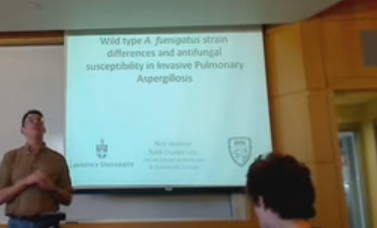
Published on 23 Apr 2014.
Wild Type A. fumigatus strain differences and antifungal susceptibility in Invasive Pulmonary Aspergillosis
-

Published on 18 Jun 2014 CT scan image of a dog with Nasal Aspergillosis
-
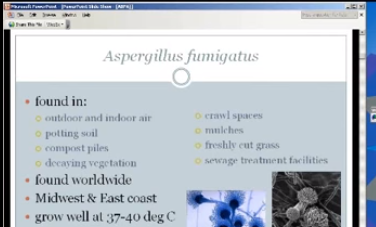
Uploaded on 11 Feb 2012 Dr. Sunena Argo discusses the diagnosis and management of ABPA
-
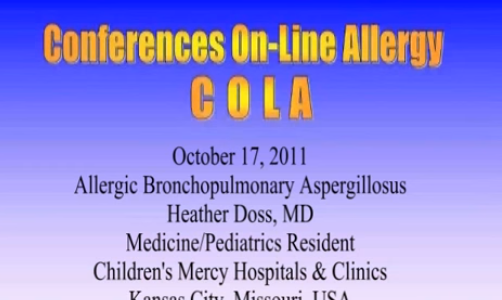
Uploaded on 12 Feb 2012 Dr. Heather Doss reviews the diagnosis and management of ABPA. Held on Oct 17, 2011.
-
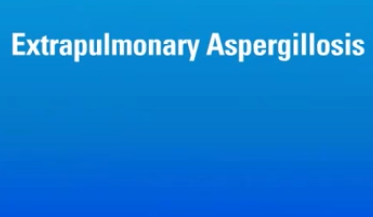
Published on 28 Dec 2012 Developed and produced for http://www.MechanismsinMedicine.com Animation Description: One of the most lethal complications of invasive aspergillosis is dissemination to the brain. The diagnosis is difficult and it has been associated with near 100% mortality, however aggressive antifungal therapy can improve outcomes. Watch this animation for more information.
-

“With every breath you take, you are inhaling a potentially deadly pathogen. You can’t see this parasite floating into your nostrils and weaving its way down into your lungs. You probably breathe many of them right back out again, but some stick with every breath. If you’re a healthy non-smoker, have no fear, your immune system has an excellent chance of destroying the invaders before they can make you sick. If your lungs or immune system are compromised, you still have an excellent chance of escaping these frequent attacks unscathed. But, for the unlucky few among us, the fungal pathogen Aspergillus might just win. Let’s take a closer look and see what we could be in for.”
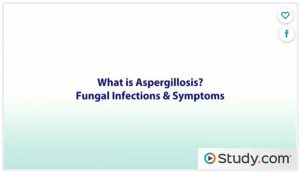
An online science educational resource – intended for students but is suitable for the layperson.
Requires registration for a free trial.

